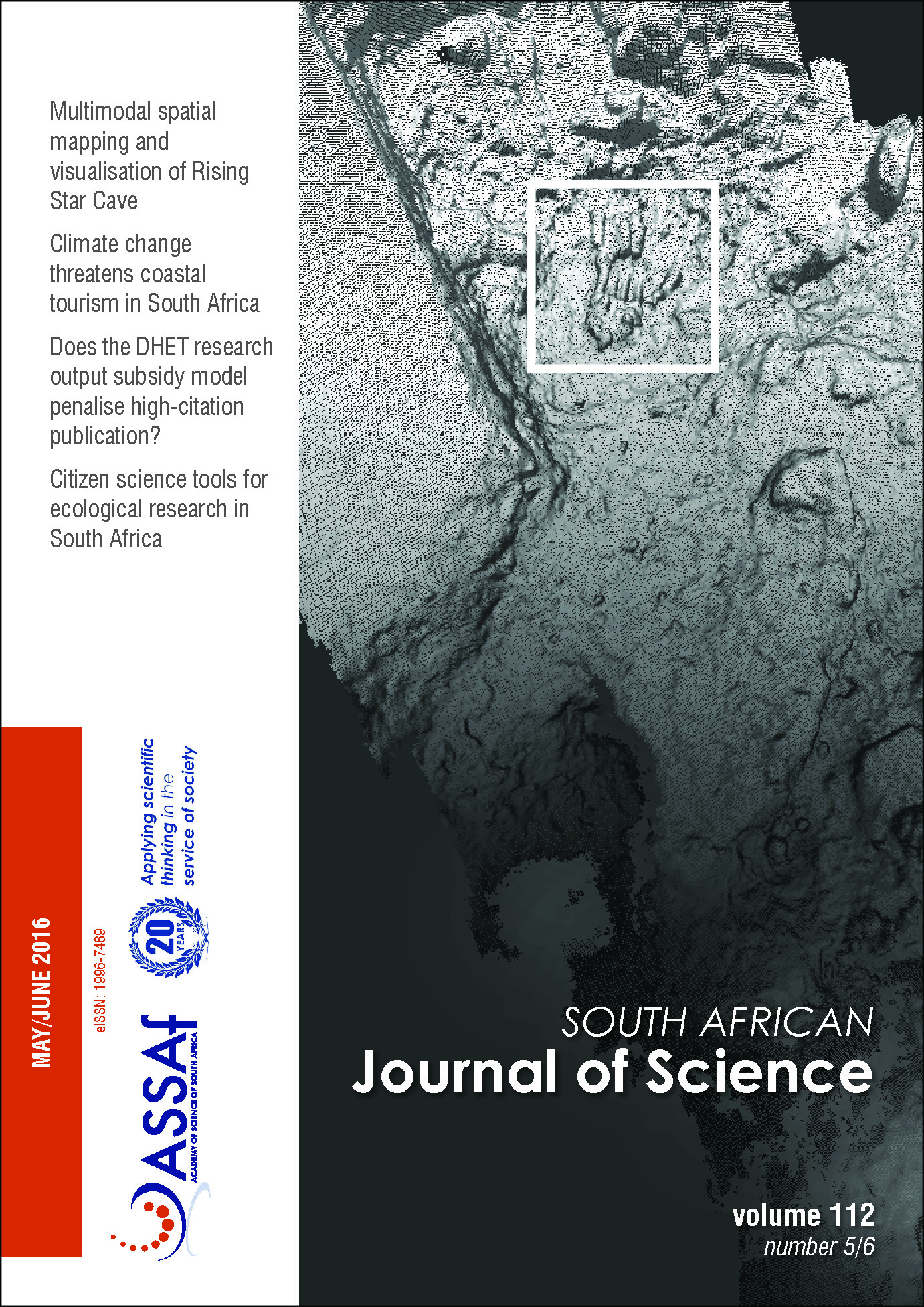A hominin first rib discovered at the Sterkfontein Caves, South Africa
DOI:
https://doi.org/10.17159/sajs.2016/20150278Keywords:
upper thorax, rib cage, Australopithecus africanus, geometric morphometrics, Gauteng ProvinceAbstract
First ribs – the first or most superior ribs in the thorax – are rare in the hominin fossil record, and when found, have the potential to provide information regarding the upper thorax shape of extinct hominins. Here, we describe a partial first rib from Member 4 of the Sterkfontein Caves, South Africa. The rib shaft is broken away, so only the head and neck are preserved. The rib is small, falling closest to small-bodied Australopithecus first ribs (AL 288-1 and MH1). Given that it was recovered near the StW 318 femur excavation, which also represents a small individual, we suggest that the two may be associated. Three-dimensional geometric morphometric analyses were used to quantify the rib fragment morphology and compare it to extant hominoid and other fossil hominin ribs. While only the proximal end is preserved, our analyses show that South African Australopithecus share derived features of the proximal first rib more closely resembling A. afarensis and later hominins than great apes.
Downloads
Published
Issue
Section
License

This work is licensed under a Creative Commons Attribution 4.0 International License.

All articles are published under a Creative Commons Attribution 4.0 International Licence
Copyright is retained by the authors. Readers are welcome to reproduce, share and adapt the content without permission provided the source is attributed.
Disclaimer: The publisher and editors accept no responsibility for statements made by the authors
How to Cite
- Abstract 616
- PDF 431
- EPUB 184
- XML 235
- Supplementary Material 137












.png)